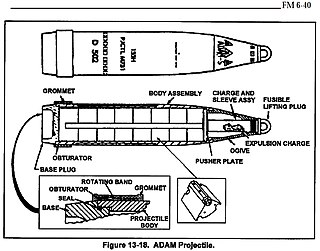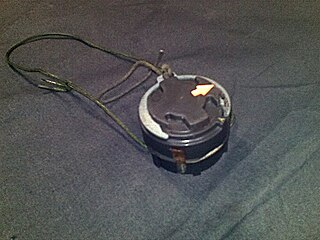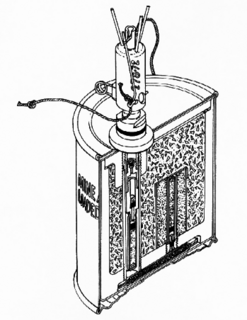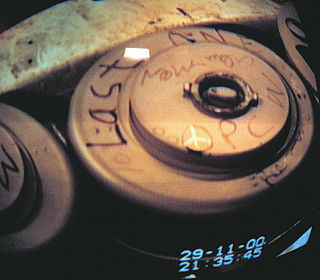 W
WArea denial artillery munition (ADAM) is a family of United States land mines and 155 mm artillery projectiles.
 W
WThe GEMSS mine system was a United States mine-laying system, part of the Family of Scatterable Mines used to rapidly emplace large tactical minefields in friendly territory. It consisted of two different types of dispensers, the towed M128 "Frisbee Flinger" and the auxiliary M138 "Flipper" portable mine layer, and deployed mines similar to those used in the GATOR mine system minus the aeroballistic casing. GEMSS was eventually replaced in US service by the Volcano mine system.
 W
WThe M2 is a United States bounding anti-personnel mine used during World War II. A number of variants of the mine were produced and although the mine is no longer in US service, it can be found in Cyprus, Iran, Iraq, Korea, Laos, Oman, Rwanda, Tunisia and the Western Sahara. Copies of the mine were produced by Belgium, Pakistan (P7), Portugal (M/966) and Taiwan.
 W
WThe M14 mine "Toepopper" is a small anti-personnel land mine first deployed by the United States circa 1955. The M14 mechanism uses a belleville spring to flip a firing pin downwards into a stab detonator when pressure is applied. Once deployed, the M14 is very difficult to detect because it is a minimum metal mine, i.e. most of its components are plastic. Because of this, the design was later modified to ease mine clearance via the addition of a steel washer, glued onto the base of the mine.
 W
WThe M16 mine is a United States-made bounding anti-personnel mine. It was based on captured plans of the World War II era German S-mine and has similar performance. The mine consists of a cast iron body in a thin steel sleeve. A central fuze well on the top of the mine is normally fitted with a pronged M605 pressure/tension (tripwire) fuze. Sufficient pressure on the prongs or tension on an attached tripwire causes the release of a striker. The freed striker is forced into a percussion cap which ignites a short pyrotechnic delay. The purpose of this delay is to allow the victim to move off the top of the mine, to prevent its upward movement from being blocked. Once the delay has burned through, a 4.5-gram black powder charge is ignited, which launches the inner iron body of the mine up into the air. The charge also ignites a second pair of pyrotechnic delays.
 W
WThe M18A1 Claymore is a directional anti-personnel mine developed for the United States Armed Forces. Its inventor, Norman MacLeod, named the mine after a large medieval Scottish sword. Unlike a conventional land mine, the Claymore is command-detonated and directional, meaning it is fired by remote-control and shoots a pattern of metal balls into the kill zone like a shotgun. The Claymore can also be victim-activated by booby-trapping it with a tripwire firing system for use in area denial operations.
 W
WThe M19 is a large square plastic cased United States anti-tank blast mine. Intended to replace the M15 mine, the design dates from the mid-1960s and contains only two metal components: the copper detonator capsule and a stainless steel firing pin which weighs 2.86 grams. It is a minimum metal mine, which makes it very difficult to detect after it has been emplaced. This mine is produced under licence in Chile, South Korea and Turkey. A copy is produced in Iran. It is found in Afghanistan, Angola, Chad, Chile, Cyprus, Iran, Iraq, Jordan, South Korea, Lebanon, the Western Sahara, and Zambia.
 W
WThe M23 is a United States steel cased chemical landmine. The mine was developed in the late 1950s and early 1960s, and approximately 100,000 units were produced. The U.S. completed its destruction of its stock at the Umatilla Chemical Depot in 2008 and the Johnston Atoll Chemical Agent Disposal System in 2000.
 W
WThe M86 Pursuit Deterrent Munition (PDM) is a small United States anti-personnel mine intended to be used by special forces to deter pursuing enemy forces.
 W
WThe Special Atomic Demolition Munition (SADM) was a nuclear man-portable atomic demolition munition (ADM) system fielded by the US military from the 1960s to 1980s, but never used in combat.
 W
WThe M136 Volcano Vehicle-Launched Scatterable Mine System (VLSMS) is a automated mine delivery system developed by the United States Army in the 1980s. The system uses prepackaged mine canisters which contain multiple anti-personnel (AP) and/or anti-tank (AT) mines which are dispersed over a wide area when ejected from the canister. The system, commonly referred to as Volcano, is also used by other armies around the world.